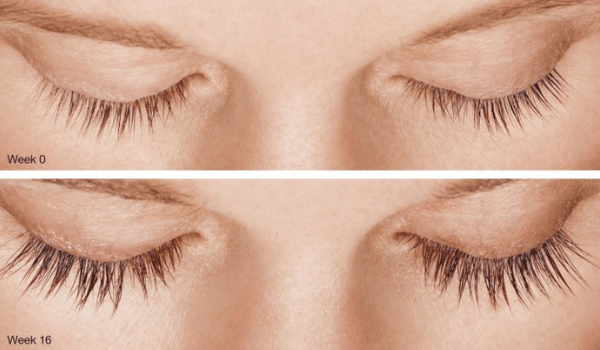When you think of fuller, longer eyelashes, fake eyelashes typically come to mind first. However, fake eyelashes aren’t the only way to get longer eyelashes. Latisse is an FDA-approved prescription medication that helps to grow thicker and longer eyelashes. It’s a topical medication that will show results after 8-10 weeks. Latisse is an effective and safe treatment to grow longer eyelashes for most people. However, there are certain eye conditions that can prevent you from using Latisse.
Applying a prescription medication so close to your eye is new to most patients. That’s why we’ve gathered some of the most frequently asked questions so that all you have to think about is darker, thicker, and longer eyelashes!
How Does Latisse Work?
You may be wondering, “How does Latisse work?” This is one of the most common questions. A drug called bimatoprost is the main active ingredient in Latisse. Bimatoprost was originally used to treat glaucoma. These patients began noticing that they grew significantly longer eyelashes. Dermatologists have found that Latisse increases the number of eyelashes produced by extending the period when eyelashes grow – which causes thicker, longer eyelashes.
How Do You Use Latisse?
Applying fake lashes to get thicker and longer eyelashes can be time consuming and a hassle. Latisse is just the opposite. After washing your face each night, you use a one-time applicator to apply Latisse to your upper lash line. Blinking will automatically spread Latisse to your lower lash line. It is important to use the applicator only once as multiple uses can cause infections and allergic reactions.
What’s So Different About Latisse?
We’ve all been tempted to try getting longer eyelashes using drug-store products. How does Latisse differ from these products? The use and effects of Latisse have been carefully studied by scientists and dermatologists to make sure the product is safe for patients. Latisse is also an FDA-approved prescription medication that can only be obtained through a dermatologist to ensure that it is used appropriately.
What Are the Potential Side Effects?
While most patients do not experience side effects, there have been some cases of minor side effects. The most common side effect noted is itchy, red eyes after using Latisse. Other, less common, side effects include skin darkening, eye irritation, and dry eyes. If you have a sudden change in vision, will be having eye surgery, or have a sudden change in tolerance to Latisse, contact your dermatologist to discuss if continuing Latisse is right for you.
Is There Anyone Who Shouldn’t Use Latisse?
While longer eyelashes are tempting, there are certain people who should not use Latisse. If you are allergic to bimatoprost or any of the other ingredients, you should not use Latisse. If you have glaucoma, please discuss with your ophthalmologist before beginning to use Latisse. In addition, if you’re on medication for the treatment of an eye pressure condition, you should consult your ophthalmologist before beginning Latisse. Additionally, if you have an active eye disease or are at increased risk for an eye disease, you should speak to your ophthalmologist regarding the risks involved with using Latisse.
You do not have to resort to fake eyelashes to get thicker and longer eyelashes. Latisse is a viable option for many patients who are looking for a more permanent option for eyelash growth. If you still have questions about using Latisse to get longer eyelashes or are interested in beginning to use Latisse, contact us at our Pittsburgh dermatology offices today. Check out our Cosmetic dermatology page to see the list of cosmetic procedures we offer.
Vujevich Dermatology Associates offers medical, surgical, and cosmetic dermatology from some of the most highly trained physicians and clinicians in the greater Pittsburgh area. You can reach our team at 412-429-2570 or visit our contact page to see all of our locations. You can also follow us on Facebook to see what’s new in the world of dermatology.

